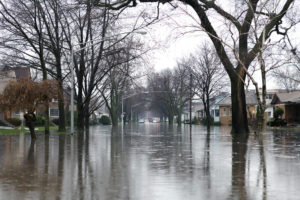 Flood Insurance is one of those things you might not think about — until you’re knee deep in muddy water in your living room. At that point, it’s too late. you’re left with moldy furniture, ruined flooring, and probably a big replacement cost. Almost 87% of homeowners don’t have flood insurance.
Flood Insurance is one of those things you might not think about — until you’re knee deep in muddy water in your living room. At that point, it’s too late. you’re left with moldy furniture, ruined flooring, and probably a big replacement cost. Almost 87% of homeowners don’t have flood insurance.
Did you know most homeowner policies exclude coverage for the peril of flood.
Flood Misconceptions:
- One of the biggest misconceptions is that you don’t need flood insurance unless you live in a flood-prone area.
- Another misconception is that flood insurance is too expensive. The average homeowner believes that Federal disaster assistance will be available. The most common form of Federal disaster assistance is a loan, which must be paid back with interest. The reality is that your property may be at risk.
- Just because you haven’t been hit by floods before, doesn’t mean you never will. Depending on where you live, your flood risk can be high, moderate or low, and your insurance rates and requirements are decided based on your flood zone. Heavy rainfall, melting snow, or tropical storms can all cause flooding, and floods happen more often and in more parts of the country than you think. In the past several years, about 75% of all declared disasters involved flooding. Granted, some areas (coastal cities or towns that get pummeled by hurricanes) are more vulnerable to floods than others.
It’s a good idea to look into flood insurance no matter where your home is located — whether that means you live in an area with little rainfall, miles away from swelling rivers and lakes, or in a zip code that falls safely outside a flood zone. In fact, over the last 5 years, all 50 states have experienced floods or flash floods. Flood policies make especially good sense when you consider the average individual flood claim amounts to more than $20,000. Flood Insurance can be purchased for properties both inside and outside the highest risk areas. Floods can strike without warning. Most policies take 30 days before they go into effect. You cannot wait until an alarming weather forecast or warning to purchase coverage.
